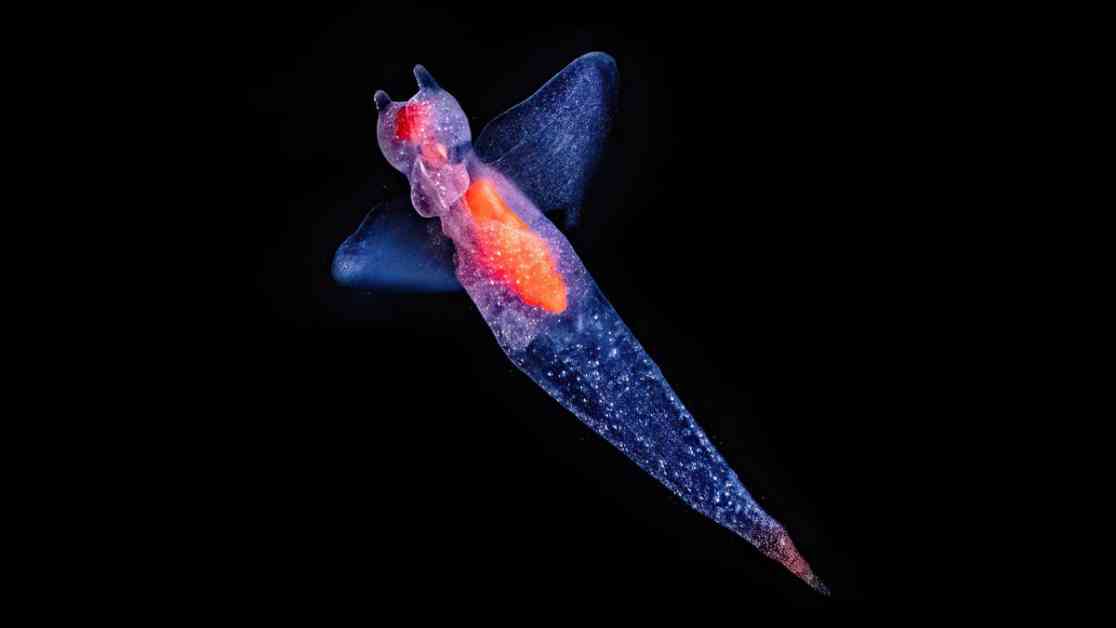Author Sönke Johnsen takes readers on a fascinating journey into the deep sea, where unique feeding habits have evolved among creatures in the open ocean. In this mysterious world, finding food is a complex game of survival, where only the slow, stupid, greedy, and indestructible creatures are caught, as marine biologist Peter Herring explains.
Many pelagic animals have developed novel feeding strategies to secure their next meal. Instead of traditional hunting methods, these creatures create screens to trap tiny particles out of the water, much like walking through a house with a fine window screen to collect dust. This method allows them to feed on abundant but minuscule prey in the vast emptiness of the oceanic water column.
One intriguing example of unusual feeding behavior is observed in the larvae of eels, which resemble long transparent leaves with tiny heads. Some researchers suggest that these larvae absorb nutrients through their skin, storing energy for their metamorphosis into adult eels. Similarly, gymosomes, such as the sea angels, possess specialized contraptions in their heads to extract prey from shells, showcasing a unique adaptation for feeding.
The struggle for survival extends beyond finding food to avoiding becoming food. In a predator-rich environment with limited hiding spots, many oceanic creatures have evolved strategies to protect themselves. Some rely on toxic or venomous defenses, while others use camouflage techniques to blend into their surroundings. Transparency is a common adaptation in the open ocean, allowing animals to appear invisible by letting background light pass through their bodies.
While some species may evolve to become larger and faster, the majority of creatures in the open ocean do not follow this trend. Instead, they rely on diverse mechanisms to survive and thrive in an environment where every meal and every encounter could be a matter of life or death. As the pelagic realm continues to reveal its secrets, the intricate web of interactions among deep-sea creatures sheds light on the ancient and complex game of survival in the least known habitat on Earth.










